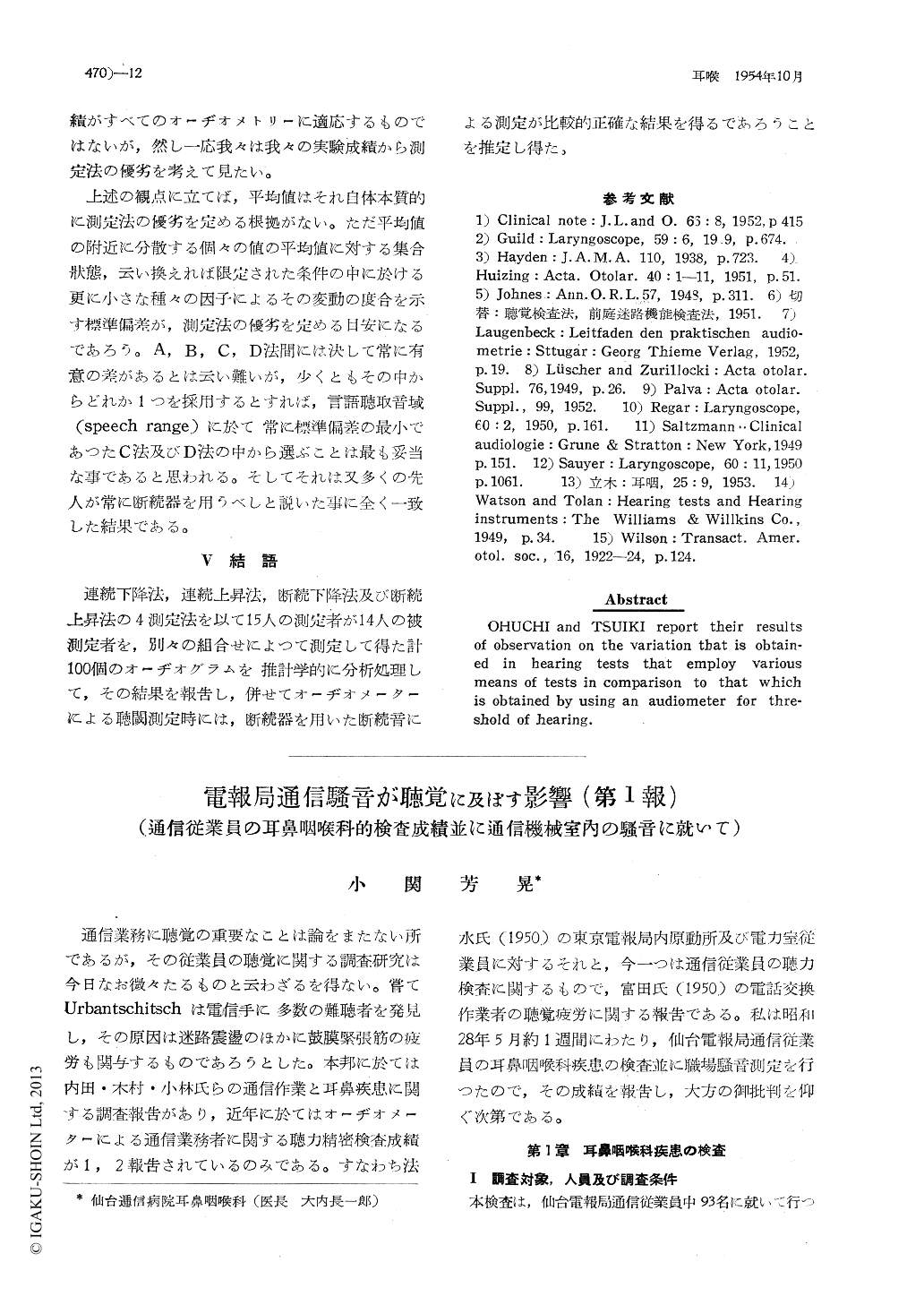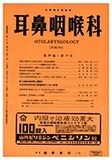- 有料閲覧
- 文献概要
- 1ページ目
通信業務に聽覚の重要なことは論をまたない所であるが,その従業員の聽覚に関する調査研究は今日なお微々たるものと云わざるを得ない。嘗てUrbantschitschは電信手に多数の難聽者を発見し,その原因は迷路震盪のほかに鼓膜緊張筋の疲労も関与するものであろうとした。本邦に於ては内田・木村・小林氏らの通信作業と耳鼻疾患に関する調査報告があり,近年に於てはオーヂオメーターによる通信業務者に関する聽力精密検査成績が1,2報告されているのみである。すなわち法水氏(1950)の東京電報局内原動所及び電力室従業員に対するそれと,今一つは通信従業員の聽力検査に関するもので,富田氏(1950)の電話交換作業者の聽覚疲労に関する報告である。私は昭和28年5月約1週間にわたり,仙台電報局通信従業員の耳鼻咽喉科疾患の検査並に職場騒音測定を行つたので,その成績を報告し,大方の御批判を仰ぐ次第である。
KOZEKI studies the effect of occupational noise on hearing among employees of a telegraphic office. The volume of noise during the business hours ranged from the lowest 62 phons to the highest 80 phones; the peak be-ing at the hours between 11 and 12 and again at 17. Before 8 and after 18 when the office is closed for business the noises registered were almost negligible. The sucjects showed hearing fatigue at the end of the day; slight insomnia and loss of appetite. Many of them showed vascular prominene about the handle of maleus which was more prevalent in the left ear. Whisper test showed the left ear to be involved more than the right. Audio-metric test showed dipping at 3,000 to 4,000 cycles by both air and bone conductions. In few cases by bone conduction a moderate loss was registered at tonal range 500 to 1,000 cy-cles.

Copyright © 1954, Igaku-Shoin Ltd. All rights reserved.


